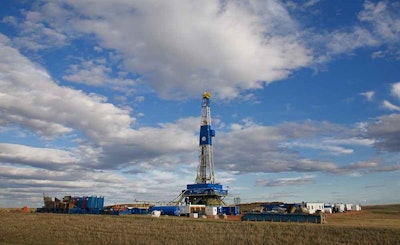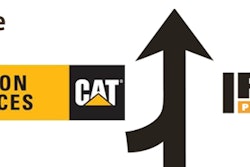 An oil rig is shown on near Williston, North Dakota. Oil extraction discoveries have led to rapid industrial development and job creation in the area. Tom Reichner / Shutterstock.com
An oil rig is shown on near Williston, North Dakota. Oil extraction discoveries have led to rapid industrial development and job creation in the area. Tom Reichner / Shutterstock.comFor the last few years the conventional wisdom has been that fracking and oil and gas extraction in shale will continue to be profitable as long as crude oil prices remain above $70 a barrel.
Below that point, middle eastern crude, which can be pumped out of the ground for less than $20 a barrel takes over and theoretically shuts down any, more expensive competition. The boom in unconventional oil and gas extraction started about ten years ago when prices for a barrel of oil were closer to, and sometimes exceeded $100 a barrel.
Today, with the price of crude oil hovering between $50 and $60 a barrel, many are starting to wonder if the boom in fracking and shale oil is over—and with it all the construction and pipeline work, welding, trucking and other related activities.
The construction consulting and financing firm FMI says no. In it’s fourth quarter Oil and Gas Advisor, it reports, “The demise of the shale revolution is greatly exaggerated.”
The key bit of evidence for FMI’s conclusion is that the unconventional extraction methods have been getting much more efficient. In the Bakken oil fields in 2012 oil rigs were averaging revenues of $23,126 per day. This year due to drilling efficiencies, that number has climbed to an estimated $43,968 assuming equal costs. At that price, the Bakken drillers could continue to compete even if oil slides to $44.14 a barrel.
The report notes that well costs have grown substantially, but says that the break even price is closer to $55 or $60 per barrel, but adds: “U.S. oil and gas producers are driving enormous technological advancements that are making shale development increasingly profitable and increasingly resilient to pricing headwinds.”
Bloomberg is less optimistic in a recent report by Tom Randall titled “Bankers See $1 Trillion of Zombie Investments Stranded in the Oil Fields”. But Randall’s report also includes projects in much more expensive drilling areas such as the Artic, deepwater drilling, and tar sands in Canada and Venezuela. Says Randall, “In the U.S. the shale-oil party isn’t over yet, but zombies are beginning to crash it.”
And the online news site The Texas Tribune notes in an article by John Reynolds that further slippage in the price of oil could lead to a regional recession in Texas.
Reynolds cites the Houston Chronicle which said that if oil remains at $55 a barrel, Texas could lose 128,000 jobs by the middle of 2015, or about 1.1 percent of the state’s non-farm employment.












